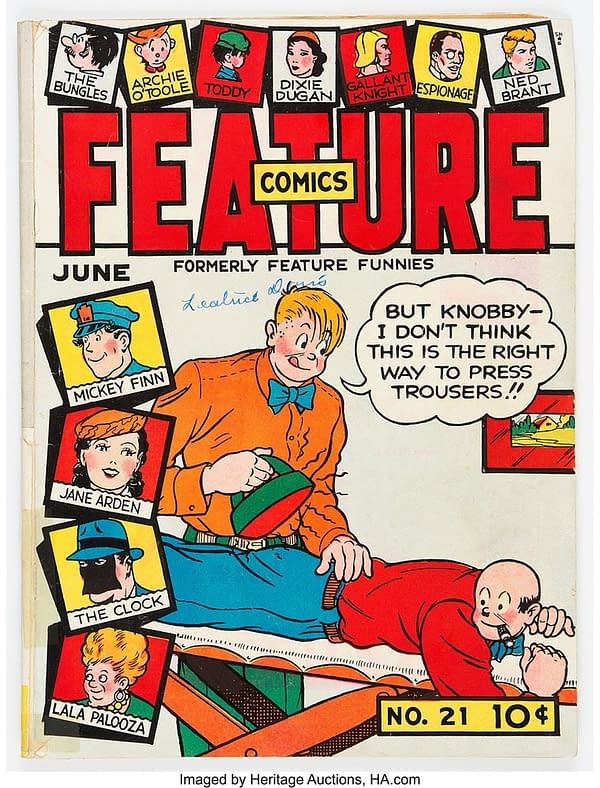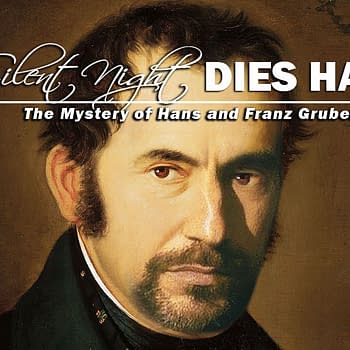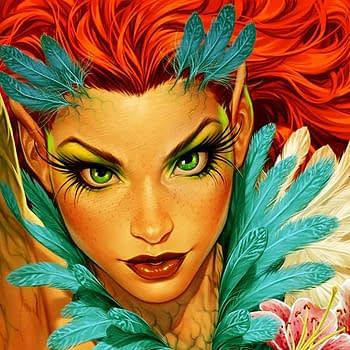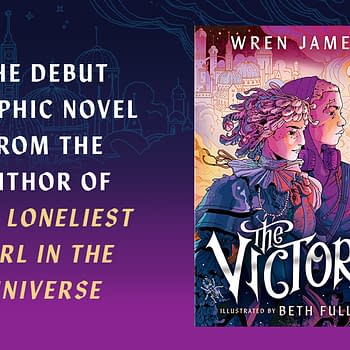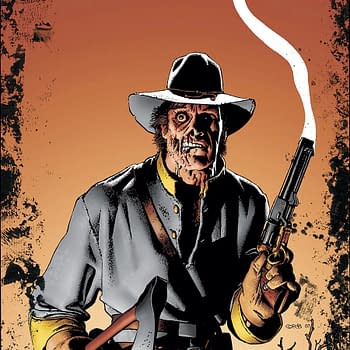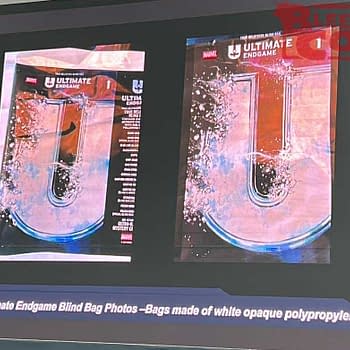Posted in: Comics, Heritage Sponsored, Vintage Paper | Tagged: busy arnold, golden age
The Funnies Fight and Feature Comics #21, Up for Auction
Busy Arnold's title transition from Feature Funnies to Feature Comics was sparked by a forgotten legal battle of the Golden Age.
Some definitive moments of Golden Age comic book history took place in and around courtrooms and law offices. Detective Comics, Inc. Against Bruns Publications, Inc., Kable News Company, and Interborough News Co (aka the Superman vs Wonder Man lawsuit) and National Comics Publications v. Fawcett Publications (aka the Superman vs Captain Marvel lawsuit) come to mind, among others. But Golden Age comics industry legend Everett "Busy" Arnold told Jim Steranko about another one for The Steranko History of Comics that deserves at least a footnote. We can see how this one played out in the comics themselves between Feature Funnies #18 and Feature Comics #21, and there's some examples of this pivotal transition for this historically important series in Feature Funnies #19 (Chesler, 1939) Condition: GD and Feature Comics #21 (Quality, 1939) Condition: GD/VG and a lot of other Feature Funnies and Feature Comics up for auction in the 2022 August 21-22 Sunday & Monday Comic Books Select Auction #122234 at Heritage Auctions.
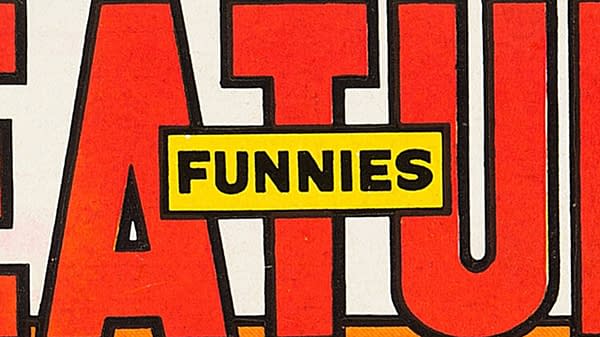
Here's what Steranko said in 1970, in the context of having interviewed Arnold for this history: "Arnold was promptly sued by Famous Funnies, who contended he had infringed on their property by using the word 'Funnies', a term they claimed to have coined for their own books. When the case came to court, Arnold produced for his defense, Joe Connolly, the president of King Features Syndicate. Testimony revealed that in 1906, Carl Sandburg had used the word 'Funnies' to describe the comics. The case was immediately dropped. No damages."
Although there seems to be no record of this lawsuit in modern legal databases, there are numerous possible reasons for that, and the timeline suggests that some form of legal action between Famous Funnies publisher Eastern Color Printing Co. (or Famous Funnies, Inc.) and Arnold's Comic Favorites, Inc. did occur. And notably, "the case was immediately dropped" suggests that the case may have been settled rather than being decided, and "no damages" does not mean that a negotiation that didn't involve money did not take place. Changes in Feature Funnies in 1939 suggest that a settlement negotiation is more likely than not.
While I can't find the 1906 Carl Sandburg "funnies" reference (see edit below), there are certainly numerous pre-Famous Funnies usages of the term "funnies" in connection to comics, but many of those may or may not be relevant here. In terms of concrete examples used as titles of comic works, the long-running Moving Picture Funnies newspaper comic that started in 1917 comes to mind among others, although Whitman's 1927 stapled booklet Buttons & Fatty in the Funnies seems to be more directly on point. It does appear that "funnies" in common usage as a contraction of "funny pages", "funny papers" or "funny pictures" arose somewhat later than one might think, and it is also relevant here to distinguish "funnies" from "funny" or even "fun", which have far earlier comic-related usages. Dell Publishing had staked its claim on The Funnies in 1929 in what is considered an important precursor to the Golden Age. As an aside, the trademark application for The Funnies by The Funnies Publishing Co. via longtime magazine editor Ernest Heyn, with a claimed usage in 1928 is an unexplored historical connection here. Heyn did work for Dell on and off during this period, but the registration using what seems to be his own corporation deserves some scrutiny. Heyn's longtime associate (they had attended Princeton together) Harry Steeger was the editor of Dell's The Funnies.
[Edit: A commenter writes to point out that the Sandburg reference is from Honky Tonk in Cleveland, Ohio, with its line "The chippies talk about the funnies in the papers." It appears that this was first published in 1920 in the book Smoke and Steel, though I do wonder about some periodically publication prior to that, as history tends to be bad about catching pre-collection publication. Nevertheless, it's hard to imagine this was written before the end of WWI given the other references in the poem, so while this would not seem to be the first usage, it's an early one, and a fascinating one as well.]
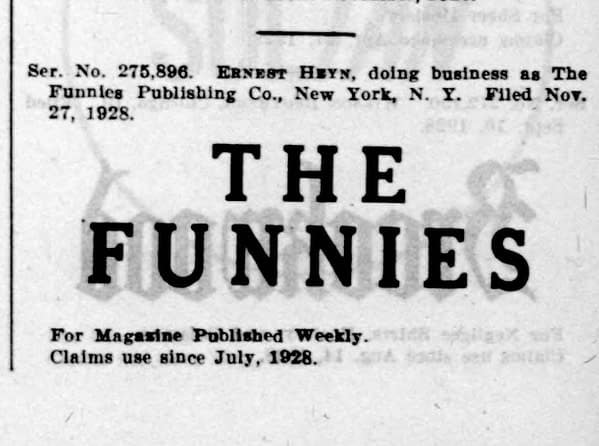
Of course, Eastern Color joined this funnies fray with Funnies on Parade in 1933. Eastern Color then printed Toy World Funnies as a giveaway for Wanamaker's in 1933 as well, which may help explain Famous Funnies, Inc. v. Famous Funn Family, Inc., which was about a toy catalog. Eastern Color and Dell also collaborated on Famous Funnies A Carnival of Comics in 1933 and then formed a joint venture for Famous Funnies Series 1 in 1934. Eastern then launched the long-running Famous Funnies on its own when Dell declined to continue. Dell revived The Funnies title on its own in 1936. We're condensing a lot of history here, but when Arnold's Feature Funnies hit the newsstand, it was the only newsstand comic magazine to use the specific word "funnies" besides Eastern Color and Dell Publications titles. This would not last (Centaur liked the word, and used it on titles such as Amazing Mystery Funnies and Keen Detective Funnies), which may suggest that Eastern Color targeted Feature Funnies due to the similarly jaunty logo style that the "funnies" in Feature Funnies used in its logo. It is very similar to the "funnies" in the Famous Funnies logo. Usage of the word itself aside, the notion that the Feature Funnies logo was designed to create confusion with Famous Funnies among readers would seem to have been a far from impossible case to make.
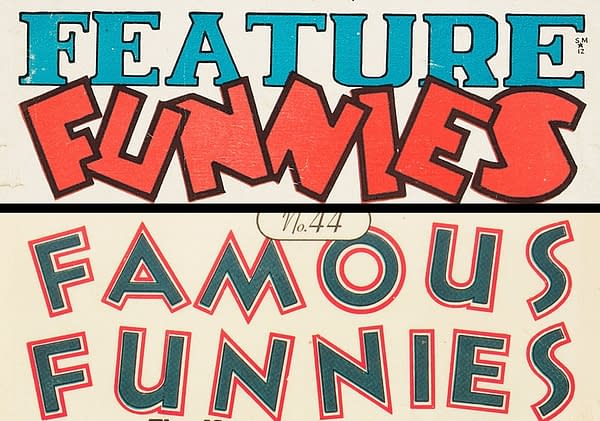
With Feature Funnies #18, the logo was redesigned to minimize the world "Funnies" and render it in plain type, which might confirm that this was the key sticking point in this conflict. This change was noted in a full-page announcement of that issue, which concluded "Doesn't that look better?" Another announcement in Feature Funnies #19 doubled down on this, saying "we think it is pretty snappy and a great improvement over our old heading." However, the inside front cover of Feature Funnies #20 announced another forthcoming change: "We are grateful to all you boys and girls for your fine letters telling us how much you like our new front cover design. Everybody says it's more distinctive and easier to spot on the newsstands. However, we are going to make the name of our magazine evermore attractive. So, beginning with the June issue on sale April 28th, your favorite comics magazine will be known thereafter as: Feature Comics."
Given the sequence of actions taken by Arnold here, plus Centaur's continued usage of "funnies" through the early 1940s, and periodic usages of it by other publishers afterward, it appears that the similarity of the world "funnies" as it was drawn for the Feature Funnies logo as compared to the Famous Funnies logo was perhaps the more prevalent issue here. It certainly seems unlikely that after having been forced to defend himself over Feature Funnies, Arnold would make a change to first minimize his usage of the word "funnies" and then remove it entirely of his own volition. It appears more likely that he made some concessions to Eastern Color during the course of engaging with them on the matter, at least for the first step of that process.
This legal brinksmanship aside, "funnies" began to fall out of fashion in favor of "comics" as a term used by newsstand comic books as the early Golden Age progressed. There are some examples of this history in progress with Feature Funnies #19 (Chesler, 1939) Condition: GD and Feature Comics #21 (Quality, 1939) Condition: GD/VG and a lot of other Feature Funnies and Feature Comics up for auction in the 2022 August 21-22 Sunday & Monday Comic Books Select Auction #122234 at Heritage Auctions.
